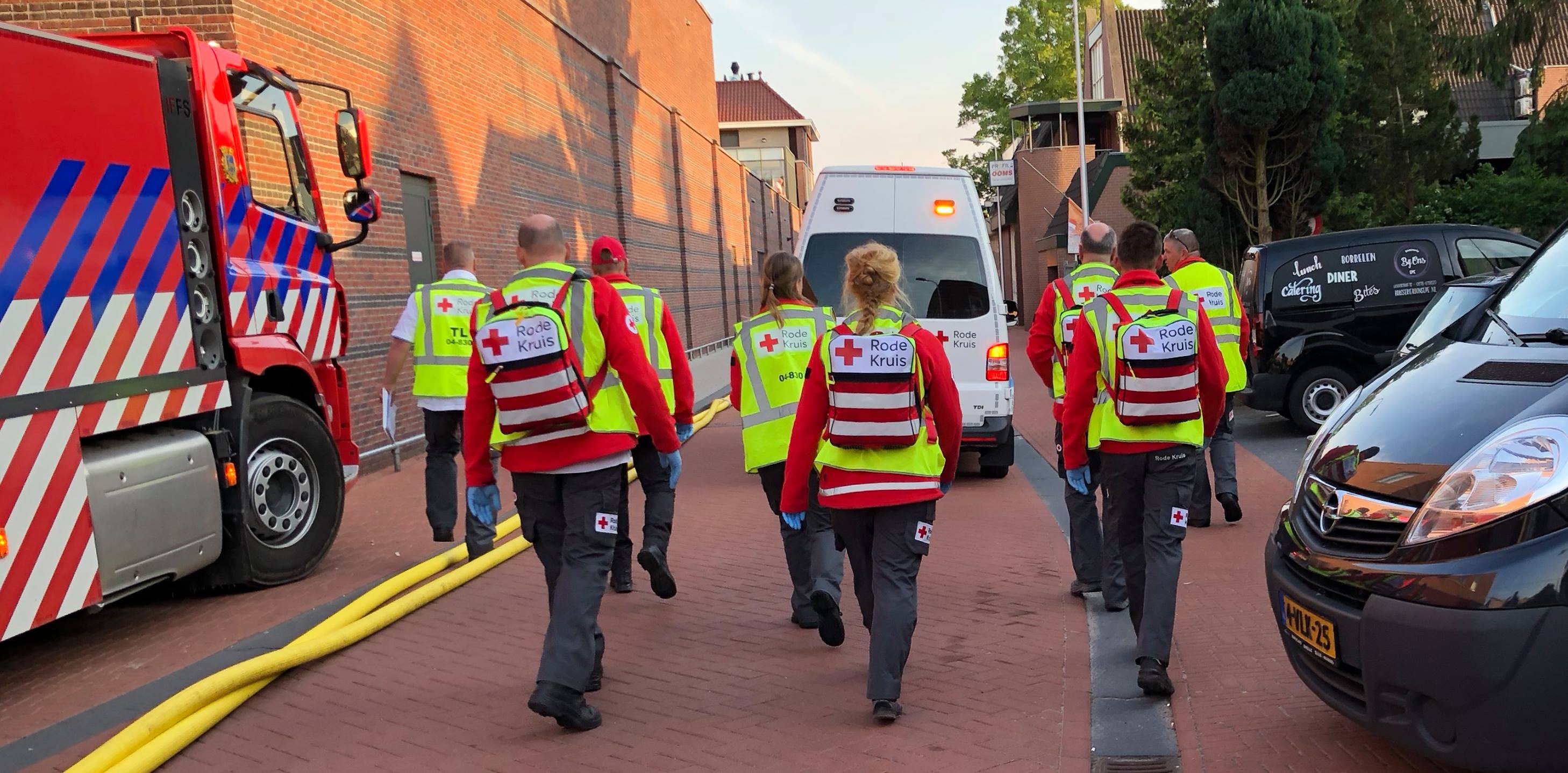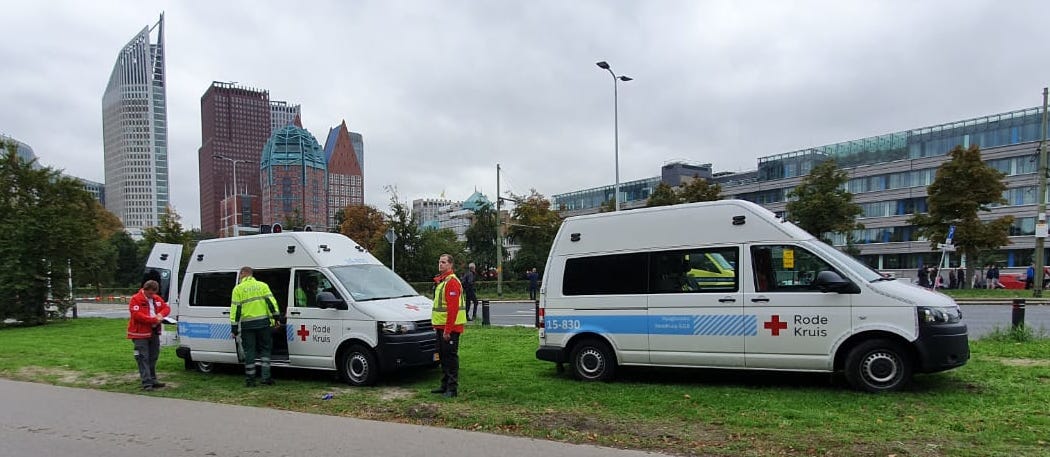Rode Kruis Noodhulp Teams

Noodhulp Teams (NHT) are teams of specially-trained volunteers of the Dutch Red cross who are called in to assist professional emergency services in case of large-scale incidents.
They form a part of the Grootschalige Geneeskundige Bijstand (GGB) model which gets initiated for incidents with more than 10 casualties (at least one NHT team is automatically dispatched from code 30 -meaning 30 or more casualties- onwards).
The role of NHT teams in these scenarios is to help the so-called T3 casualties, who appear lightly injured and do not require immediate medical care. In practice, any person who is able to walk and talk on their own will be designated T3.
This does not mean urgent medical care isn’t needed however, as appearances can be deceiving. People with internal injuries are often fine initially, but they may decline suddenly and rapidly, for example as their blood pressure drops from internal bleedings.
NHT team members are trained to recognize these types of injuries and so they help reduce the pressure on ambulance personnel by taking care of T3 casualties and monitoring their vitals, allowing the professional services to prioritize better and help critically injured people first.
Dispatch
NHT team members are volunteers with regular jobs, but they each carry a pager that is connected to the C2000 communications network, used by all emergency services in The Netherlands. When the GGB model is initiated, the emergency services dispatch center will send out a notification to one or more NHT teams informing them of an incident.
Team members then have 30 minutes to get to a designated location –called an uitgangsstelling (UGS)– where a driver will pick them up with their van. From there, they will travel to the accident site with blue lights and sirens.
There are typically 4 predefined UGS locations in each district, ensuring there is always a UGS within 15 minutes of an accident site. This way, NHT teams should arrive on site within 45 minutes.
